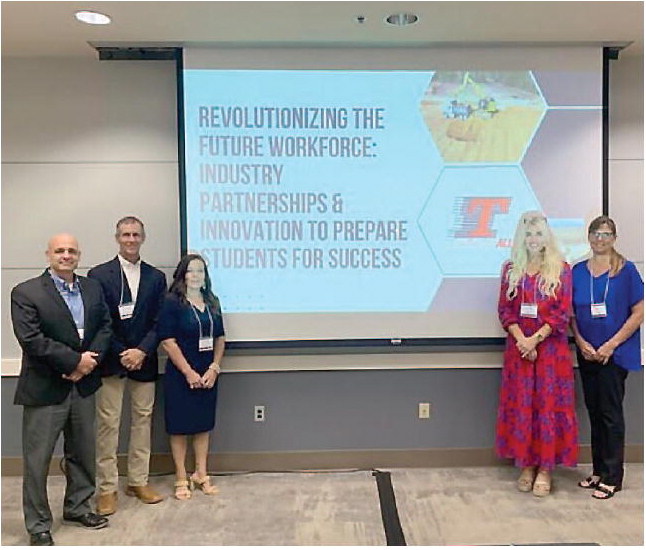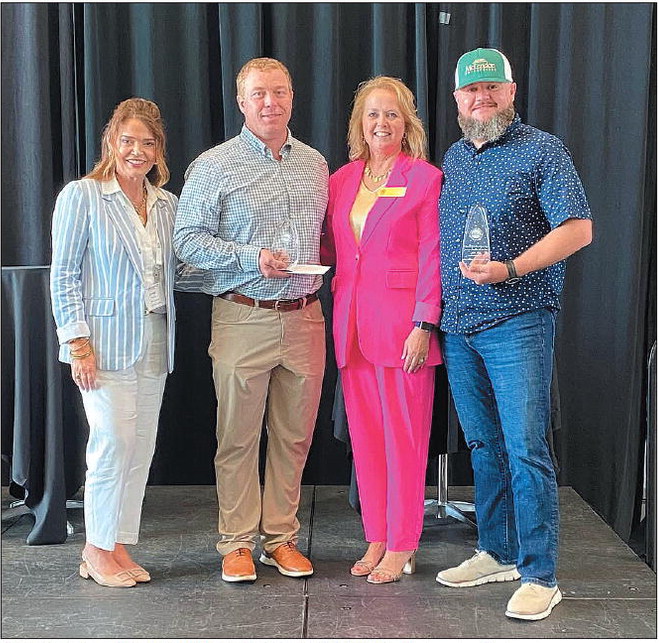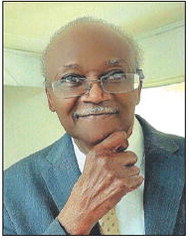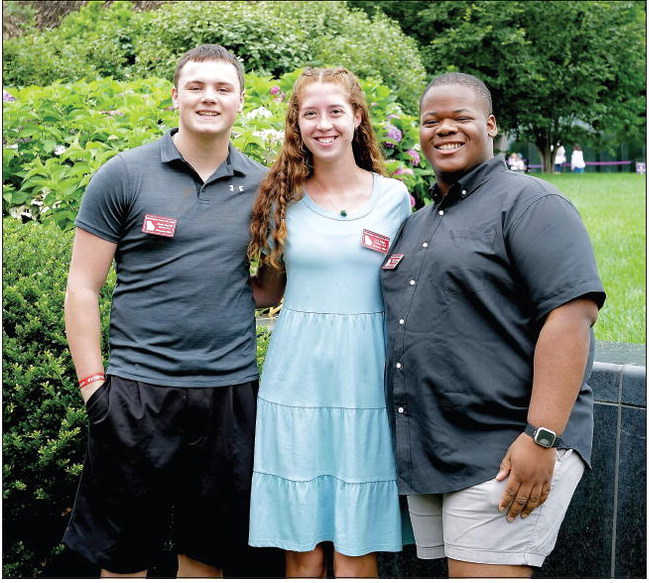continued from page sible for ….


continued from page
sible for Downtown Vidalia.
According to Best, the rebirth of a lively downtown area began with the restoration of Theatre Dublin, a historic theater venue similar to the Pal. “Everyone seems to think Downtown Dublin was an overnight success, but really, it started in 1996. What started it was our theatre, just like y’all have done here,” he explained. “In fact, Garbutt Construction Company completed the restoration of it.” Bill Lovett, a local resident, put up an extraordinary amount of money as an incentive for others to invest in the project. It took $1 million from city and private enterprises to restore the theatre at that time. The venue is now a 624seat performing arts theater. “They also have gospel sings. You have everything from country music to the Atlanta Symphony coming in there,” Best said.
Several years after the restoration of Theatre Dublin, the government completed the next public revitalization project. “In 2005, we created the Market on Madison,” Best shared. “In between [the renovation of Theatre Dublin and creation of Market on Madison], we were working to clean up downtown – putting up new light poles and everything. We originally felt like the Market on Madison would be a good farmer’s market to use on Saturday’s. Come to find out, it has become a venue for everything. We have First Friday there; we have weddings there – you name it, it’s there.”
The next few years were spent with several private investors working to bring old buildings back to life. Businesses like Morris Bank, Deano’s Italian, and the Fred Roberts Hotel began entering the historic area in 2009-2011, and still continue to bring in customers to the district today. After the private entities began investing in the area, the government returned to help improve Downtown, as they created the Bicentennial Plaza to help with parking issues.
The trend of public and private growth continued after the creation of the Plaza in 2014, as the area now hosts private businesses such as Company Supply, Old First National Bank, Miller & Company, The Henry, Bank of Dudley, Darley Law Firm, Curry Maffett Insurance, and Saltwater Fisher, and public spaces, such as the Jackson Street Plaza.
The group shared that this rejuvenation of Downtown Dublin was possible not only because of the partnership between public and private entities, but also because of the existence of historical tax incentives, which encourage investors to preserve the history of cities by restoring old buildings and bringing new businesses to them. These incentives include Federal Historic Tax Credits, State continued from page
Historic Tax Credits, and a Property Tax Freeze.
The Federal Historic Rehabilitation Tax Credit Program is an indirect federal subsidy to finance the rehabilitation of historic buildings with a 20% tax credit for qualified expenditures. To qualify for these tax credits, several criteria must be met: The property must be listed on the Georgia Register of Historic Places individually or as a contributing building within a historic district.
The qualified rehabilitation expenditures must exceed the adjusted basis of the building or $5,000.
The business housed in the building must be income producing.
At least 5% of the qualified expenditures must be allocated to work completed to the exterior of the building.
The project must be approved by the State of Georgia Historic Preservation Division.
Rehabilitation must be in accordance with the Department of Community Affairs’ “Standard for Rehabilitation” and must be completed within two years.
Also, federal tax credits may be combined with tax credits earned through the State of Georgia Historic Rehabilitation Tax Credit Program, which gives tax credits for 25% of rehabilitation expenditures up to $300,000. The criteria to receive these credits are similar to Federal criteria: The property must be listed on the Georgia Register of Historic Places individually or as a contributing building within a historic district.
The qualified rehabilitation expenditures must exceed the adjusted basis of the building or $5,000.
At least 5% of the qualified expenditures must be allocated to work completed to the exterior of the building.
The project must be approved by the State of Georgia Historic Preservation Division. Rehabilitation must be in accordance with the Department of Community Affairs’ “Standard for Rehabilitation” and must be completed within two years.
Garbutt said that the difference between the Federal Tax Credits and the State Tax Credits is that there are some projects that are not income producing that receive State Tax Credits on a case-by-case basis.
“A lot of times, these tax credits completely cover property taxes. You have to remember these are not tax deductions, but credits toward taxes,” Garbutt remarked. “Because of this, businesses often ‘sell’ tax credits to other businesses, helping them gain further income from the project.”
An 8-year property tax freeze is also open to those who qualify through the Georgia Preferential Property Tax Assessment Program. In this program, participants may freeze their property tax assessments at the property value before the rehabilitation is completed for 8.5 years. This incentive program is designed to encourage rehabilitation of both residential and commercial historic buildings.
Higdon also informed the audience that there are several downtown revolving loan fund programs that will also aid in the revitalization of historic buildings, such as the Georgia Cities Foundation Revolving Loan Fund and the State Downtown Development Revolving Loan Fund.
The maximum loan amount for these two funds is $200,000-$250,000 with an interest rate below market rate, which is currently 2%-3.5%. The loan has a 15-year amortization period, except for the Georgia Cities Foundation Revolving Loan Fund, which has a 10-year repayment term.
Activities that are eligible to receive this funding include land and/or building acquisition, rehabilitation of existing buildings, new construction, and combinations of those activities. Operating expenses, refinancing existing permanent loans, funding local Revolving Loan Funds, and streetscape and façade programs are not eligible for this financing opportunity. Eligibility considerations also include the project’s alignment with the downtown plan, potential project impacts, a realistic budget, and the applicant’s business plan and credit.
According to Higdon, the Downtown Development Authority usually controls these loans, as the state cannot directly give these types of loans to private parties.
Higdon also emphasized that using the 5040-10 Financing Structure, a $1 million project may be simplified to cost $100,000 of the project developer’s money upon startup. For example, if a $1 million project – which costs $350,000 for acquisition and $650,000 for rehabilitation – is financed through this structure, then $500,000 will be obtained through conventional bank financing, $400,000 will come from a low-interest loan through the downtown revolving loan funds, and $100,000 will be spent from the owner’s equity.
He went on to share numerous other possible funding resources, such as the State Small Business Credit Initiative through the U.S. Department of Treasury, Redevelopment Fund, Opportunity Zone Incentives, and more. Higdon shared that he may be contacted at (678) 6511018 for more information on the Georgia Cities Foundation Lending Program, or the program’s website may be visited at www.georgiacitiesfoundation. org.
Higdon also suggested contacting the Georgia Small Business Development Center for help with developing and updating business plans, identifying sources of capital, setting up record keeping systems and analyzing financial data, conducting specialized research geared to specific needs of the businessowner, creating marketing strategies and advertising campaigns, and analyzing statistical and demographic data.

STUDENTS OF THE MONTH — Toombs Central Elementary School has announced their Student of the Month award recipients for the month of August. Front Row, L to R: Sebastian Acero (Kindergarten), Riley Grimes (PK), Braylin Cox (2nd grade), Shiv Patel (1st grade). Back Row, L to R: Jayden Aguilar (3rd grade), Miley Smith (5th grade), Adrienne Braddy (4th grade).





